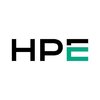AWS Cloud and DevOps Engineer
10+ AWS Cloud and DevOps Engineer Interview Questions and Answers

Asked in Cognizant

Q. What is a Persistent Volume (PV) and a Persistent Volume Claim (PVC) in Kubernetes, and how do they relate to stateful applications?
PV and PVC in Kubernetes are used to provide persistent storage for stateful applications.
Persistent Volume (PV) in Kubernetes is a piece of storage in the cluster that has been provisioned by an administrator.
Persistent Volume Claim (PVC) is a request for storage by a user or pod in the cluster.
PVs and PVCs decouple storage from the pod, allowing for easier management and scaling of stateful applications.
PVs can be dynamically provisioned or statically provisioned, depending...read more

Asked in Cognizant

Q. What is the purpose of Helm in Kubernetes, and how does it simplify application deployment and management?
Helm is a package manager for Kubernetes that simplifies application deployment and management.
Helm allows users to define, install, and upgrade complex Kubernetes applications with ease using charts.
It helps in managing dependencies, configurations, and versions of applications in Kubernetes.
Helm enables sharing of applications through public or private repositories, promoting reusability and collaboration.
It provides a templating engine to customize configurations for diffe...read more

Asked in Cognizant

Q. How can you perform rolling updates and rollbacks of applications in Kubernetes?
Rolling updates and rollbacks in Kubernetes can be performed using deployment objects and their configurations.
Use Kubernetes deployment objects to manage application updates.
Specify the desired number of replicas and update strategy in the deployment configuration.
To perform a rolling update, change the image version in the deployment configuration and apply the changes.
Kubernetes will gradually update pods to the new version while maintaining availability.
To rollback an upd...read more

Asked in Cognizant

Q. How would you troubleshoot a Pod that is not running as expected in a Kubernetes cluster?
To troubleshoot a Pod not running in a Kubernetes cluster, check logs, describe Pod, check resource limits, verify network connectivity, and restart Pod.
Check the logs of the Pod to identify any error messages or issues
Describe the Pod to get more information about its status, events, and configuration
Check the resource limits and requests of the Pod to ensure it has enough resources to run
Verify network connectivity within the cluster to ensure the Pod can communicate with o...read more

Asked in Cognizant

Q. What are DaemonSets in Kubernetes, and when might you use them?
DaemonSets in Kubernetes ensure that a copy of a pod is running on all or a subset of nodes in a cluster
DaemonSets are used when you need to run a single pod on all nodes in a cluster, such as logging or monitoring agents
They are also useful for running pods that provide node-level services, like storage or networking
DaemonSets can be used to ensure that a specific pod is always running on specific nodes, regardless of other scheduling constraints
Asked in Alt Dynamics

Q. Can you explain the difference between EC2 and Lambda?
EC2 provides scalable virtual servers, while Lambda offers serverless computing for event-driven applications.
EC2 (Elastic Compute Cloud) allows users to rent virtual servers for various workloads.
Lambda is a serverless compute service that runs code in response to events without provisioning servers.
EC2 requires management of the underlying infrastructure, while Lambda abstracts infrastructure management.
Example: Use EC2 for hosting a web application with persistent storage;...read more
AWS Cloud and DevOps Engineer Jobs


Asked in Alt Dynamics

Q. How would you set up CI/CD pipelines using AWS services?
Set up CI/CD pipelines in AWS using services like CodePipeline, CodeBuild, and CodeDeploy for automated deployments.
Use AWS CodePipeline to define the CI/CD workflow, integrating various stages like source, build, test, and deploy.
Integrate AWS CodeCommit or GitHub as the source repository for version control.
Utilize AWS CodeBuild to compile source code, run tests, and produce artifacts.
Deploy applications using AWS CodeDeploy, which supports EC2 instances, Lambda functions, ...read more
Asked in Alt Dynamics

Q. What are AWS Budgets and how do they help manage usage?
AWS Budgets help users manage and control their cloud spending by setting custom cost and usage thresholds.
Allows users to set budgets for specific services, e.g., EC2 or S3.
Sends alerts when spending approaches or exceeds the budgeted amount.
Supports tracking of both cost and usage metrics.
Can be integrated with AWS Cost Explorer for detailed analysis.
Example: Set a monthly budget of $500 for development resources.
Share interview questions and help millions of jobseekers 🌟

Asked in Alt Dynamics

Q. Your EC2 instance isn't responding. Walk through your troubleshooting steps.
Troubleshooting an unresponsive EC2 instance involves checking connectivity, instance status, and resource utilization.
Check the instance status in the AWS Management Console to see if it's running.
Verify network connectivity by pinging the instance's public IP or DNS.
Examine security group rules to ensure the necessary ports (e.g., SSH on port 22) are open.
Review CloudWatch metrics for CPU, memory, and disk usage to identify resource exhaustion.
Check the system logs via the ...read more

Asked in Hewlett Packard Enterprise

Q. Why do you want to join this company?
I am excited to join this company for its innovative culture, commitment to cloud technology, and opportunities for professional growth.
The company's reputation for cutting-edge cloud solutions aligns with my passion for technology.
I admire the collaborative work environment that fosters creativity and innovation.
The opportunity to work with a diverse team on impactful projects excites me.
I am eager to contribute to the company's mission of delivering exceptional cloud servic...read more

Asked in Senco Gold

Q. Tell me about yourself.
AWS Cloud and DevOps Engineer with extensive experience in cloud architecture, automation, and CI/CD practices.
Over 5 years of experience in cloud computing, primarily with AWS services like EC2, S3, and RDS.
Proficient in Infrastructure as Code (IaC) using tools like Terraform and AWS CloudFormation.
Implemented CI/CD pipelines using Jenkins and AWS CodePipeline, reducing deployment times by 30%.
Strong background in containerization technologies such as Docker and orchestratio...read more

Asked in TCS

Q. What technologies have you used?
I have experience with a variety of technologies including AWS, Docker, Kubernetes, Jenkins, Terraform, and Ansible.
AWS
Docker
Kubernetes
Jenkins
Terraform
Ansible

Asked in Persistent Systems

Q. What daily tasks can be automated using Terraform?
Terraform daily tasks involve infrastructure provisioning, configuration management, and automation.
Creating and managing infrastructure using Terraform scripts
Updating and modifying existing infrastructure as needed
Automating deployment processes for applications
Implementing version control for Terraform configurations
Monitoring and troubleshooting Terraform deployments
Interview Questions of Similar Designations
Interview Experiences of Popular Companies





Top Interview Questions for AWS Cloud and DevOps Engineer Related Skills



Reviews
Interviews
Salaries
Users

















